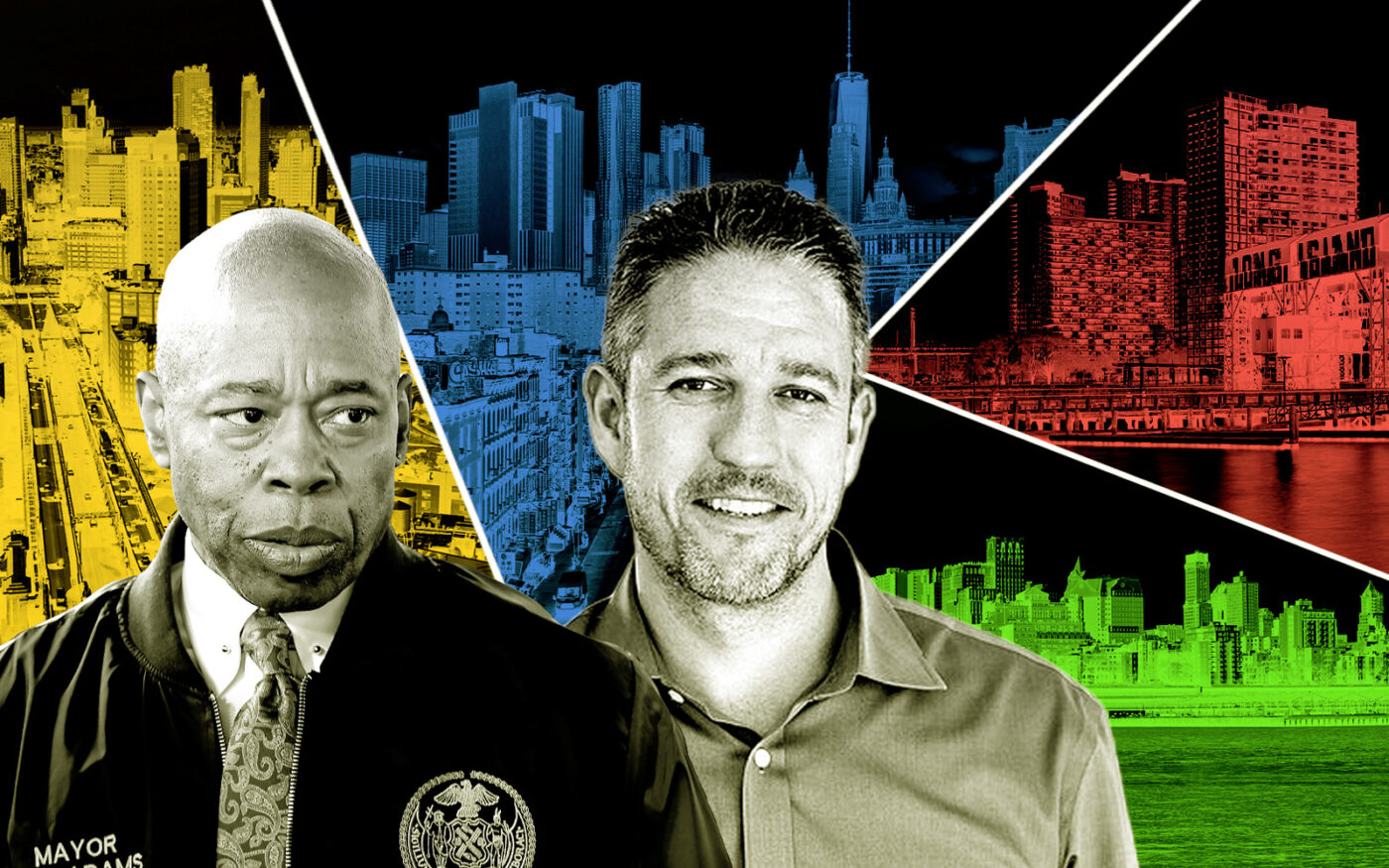Trending
Which neighborhoods would change if density cap did?
Limit on residential building size exacerbates city’s housing shortage

For some city officials, Long Island City is where dreams go to die.
The neighborhood was last rezoned in 2001, and attempts by the de Blasio administration to add density and affordable housing requirements were stopped by fierce community opposition. In 2019, of course, there was Amazon’s Valentine’s Day decision to leave Long Island City at the altar rather than build a campus opposed by some local politicians and activists.
Now the area has another shot.
It is one of a handful of areas where the city could allow for larger buildings if the state lifts the five boroughs’ cap on residential density, as Gov. Kathy Hochul has proposed. It is a big “if,” however. Similar proposals have faced opposition for years, and state lawmakers have balked at relinquishing control.
Affordable housing boost
The city’s residential floor area ratio — a metric that describes the relationship between a building’s floor area and the lot it sits on — is limited to 12 by state law. And even then, that density is only possible if affordable units are included. Otherwise, the highest FAR for residential space is usually 10.
Limits on the density of New York City’s residential housing have contributed to underdevelopment for decades. By one estimate, the FAR cap has prevented the construction of 200,000 apartments in transit rich areas of the city, enough to house almost 500,000 people.
“Removing this supply side limitation could be an effective tax-free measure for promoting the production of housing,” said a 2015 report from the Center for Urban Real Estate at Columbia University. It suggested the 1960s regulation is outdated, given modern HVAC and lighting systems.
If the state were to lift that cap, change to the city’s zoning could occur through familiar channels. The Department of City Planning would initiate rezonings of specific neighborhoods, requiring affordable units under the city’s Mandatory Inclusionary Housing program.
“Bigger buildings yield more affordable housing with less public subsidy,” said Robert Fuller, an architect at Gensler, the nation’s largest architectural firm.
Fuller refuted the notion that skinny residential towers like those on Billionaires’ Row would spring up if the FAR cap were abolished. “There won’t be 57th Street buildings everywhere,” he said, partly because Central Park Tower and 432 Park Avenue, for example, used loopholes including zoning lot mergers and empty service floors to boost height beyond the FAR limit.
Another limit is cost, which increases with the height of a building. “Affordable housing needs to be built affordably,” said urban planner and activist George Janes, adding, “Removing the FAR limit will never produce a 100 percent affordable building.” But other benefits may result.
As a result of relaxed regulation, a larger market for unused development rights at landmarked properties including churches and historical buildings would likely emerge, according to Janes. The sale of development rights would in turn benefit the sellers’ community-oriented missions.
Office-to-resi puzzle
Districts already zoned for high density residential and commercial space, including business districts in Long Island City, Midtown, Downtown Brooklyn and Lower Manhattan, would be “low-hanging fruit,” said Elise Wagner, co-chair of Kramer Levin’s land use department.
Commercial space in some parts of these areas can reach an FAR of 15. But elected officials are now focused on housing, given the shortage of homes and the surfeit of office space. Still, it is not clear that Hochul’s proposal, which was omitted from the Assembly and Senate budget bills, has gained any traction.
“From a bulk point of view, you would not be changing what is already permitted,” Wagner said. “The environmental review would probably be less substantial because you can already build that big.” Fuller, the architect, said a FAR of 18 would allow for more contextual development.
Mitch Korbey, chair of Herrick’s land use and zoning group and a former director of the Department of City Planning’s Brooklyn office, pointed to Long Island City, Midtown and Midtown South as likely contenders. He said LIC’s M1-4 zoning is ripe for change, something that was examined several years ago but abandoned amid political opposition.
Yet City Council Speaker Adrienne Adams, citing the neighborhood’s “industrial gold mines,” is pushing for more such development there. Korbey calls that a mistake, given the city’s housing needs.
“Long Island City’s manufacturing zone has long outlived its usefulness,” he said.
Mayor Eric Adams signaled this week that lifting the cap would be especially relevant to Midtown. During his State of the City address, the mayor said his administration is considering rezoning parts of Midtown that are zoned exclusively for offices and manufacturing.
Without state action on residential FAR, the city’s plan to convert millions of square feet of vacant office space into housing becomes harder, but not impossible.
Another state proposal would expand the city’s most flexible conversion rules to buildings constructed before 1990. Today, office buildings permitted after 1969 must abide by the residential FAR cap when being converted, except in Lower Manhattan, where buildings constructed between 1961 and 1977 are exempt from the residential density limit. But even that freedom sometimes produces absurd results.
Consider the Downtown office buildings at 175 Water Street, built in 1983, and 160 Water Street, built in 1972. They are five minutes apart by foot and each have 480,000 square feet and a similar FAR. Yet only 160 Water can be converted to residential. Were the FAR cap removed, such conversions would be spared from the rezoning process, saving a potential 175 Water project perhaps $1 million and two years.
“Removing the FAR limit from existing buildings, in order to allow for conversions, is key,” said Gensler’s Steven Paynter.
He noted the approach of some Canadian cities. In Toronto, limits on residential floor plates — rather than on FAR — control for building size. And in Calgary, “if a building exists and you’re not going to make it bigger, you can do what you like with it,” he said.
Political realities
Absent state action, the city could still extend Lower Manhattan rules to high-intensity commercial districts. According to a report by a city task force focused on office conversions, such a change would make it easier to convert some 16 million square feet of older office space in Downtown Flushing and the Hub, a commercial center in the South Bronx.
In Midtown, so-called performance-based zoning that regulates qualities in the public interest — such as sky exposure — offers an alternative to the FAR metric.
When it comes to expanding the number of office buildings that can be converted to residential, the city will probably need to take the longer route. The current and past calls for the state to lift the cap have faced significant opposition. Last year, the Municipal Art Society testified that the city needs to overhaul its inclusionary housing program — which has been criticized for producing few deeply affordable units — before allowing more residential density.
During a hearing this month, lawmakers from the East Village, Lower East Side and Boerum Hill — where some row house residents object to towers rising along Flatbush Avenue — objected to the measure.
Legislators may still take up the issue once the budget is done, although that entails more political risk. Some observers say that should not matter.
“The state shouldn’t meddle in local zoning issues,” summarized Janes. “It’s ridiculous that the state limits FAR in New York City. Yonkers doesn’t have a limit. New Rochelle doesn’t have a limit.”





